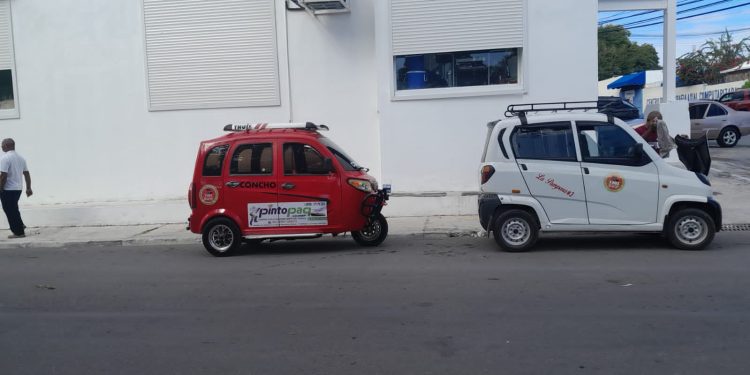Driving a “pámpara”: the option of some Barahoneros given the scarcity of formal work

Source: El Dinero
Milton found work in “la pámpara” to make ends meet due to the limited job opportunities available in Barahona. Around 150 tuck-tuck-type vehicles travel through the demarcation’s 163 square kilometers, reminiscent of the busy streets of Thailand, Indonesia, and India. He explains that he lost his job as a cook during the pandemic (where he earned RD$12,000 per month) and decided to become a driver to earn RD$2,000 per day. According to the Regional Center for Sustainable Economic Strategies (CREES), the country will end 2022 with an unemployment rate of 6.4% as the labor market continues recovering from the coronavirus’s effects. Informal employment employs 52.1% (2,293,208) of the economically active Dominican population, which lacks social protection, earns low wages, and is inefficient. Meanwhile, the formal sector employs 47.9% of the workforce (2,105,192 people). When the data was broken down, the transportation and communications branch registered 314,610 people or 7.1% of all workers.
“Not everyone can afford a car for RD$600,000. I rent a car for RD$700 per day,” José explains, as he drives a passenger to their destination for RD$150. According to the driver, a trip from Barahona to Azua earns RD$1,500. “On a good day like today (holiday Monday), I can generate up to RD$4,000 because people travel everywhere and it’s a short (journey),” he says. He calculates that the trade will earn him at least RD$22,000 per month. “Here (in Barahona), I don’t spend much because you live on a low income and everything is cheap,” he explains. According to pop culture, “La Pampara” is something popular and coveted at the moment.
According to the General Directorate of Internal Taxes, the Dominican Republic has 5,152,488 registered vehicle units, including 2,874,590 motorcycles, 1,045,414 automobiles, and 569,102 jeeps. The remainder consists of heavy vehicles and buses. “Before, I used conchos a lot because they’re fast and cheap, RD$50 per trip, but now they’ve gone up to RD$75 and RD$100, otherwise they won’t take you when you go with packages,” says Leticia, a nurse. Other residents, such as Miguel Pérez, prefer traditional taxi services, which cost between RD$175 and RD$250.


















These vehicles do serve a good purpose. They have more allowable passenger capacity with the extra ability to carry more cargo under a roof, especially in narrow streets and alleyways.
The downside of these pampara’s, tuk-tuks, is they are outsized motos that operated in the same aggressive challenge of traffic rules and regulations as its two-wheeled brothers. The problem is they add a new risk to operators of other vehicles that now have to learn to be aware of them during their travels.
Think… they are a combined bother now, wait until the silent electric ones are imported.
The Dominican government needs to increase the minimum wage
By increasing the minimum wage, workers will earn more and spend more it will stimulate economy
It also needs to bring more manufacturing jobs
It has a young population, that a lot of first world countries are lacking